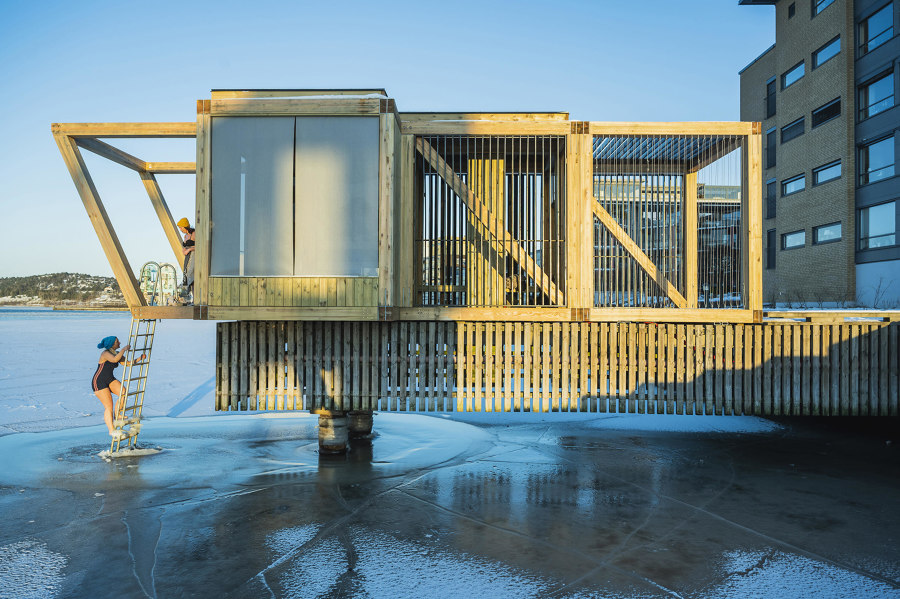Source:
Architonic, Peter Smisek
View Original Article
With a gradual easing of lockdown restrictions, wellness facilities might soon be inviting people back into the water again – among them, our nature-embracing selection from across Europe.
Whether they’re considered a rare extravagance or a small everyday luxury, spas and thermal baths have been undergoing something of a renaissance over the last few decades, with new facilities being built all across Europe – from the rolling countryside to urban quaysides, from volcanic beaches to established spa resorts.
In the village of Hinterbrühl south-west of Vienna, architecture studio smartvoll has designed the Spa Pavilion. Reminiscent of Mies van der Rohe’s seminal Barcelona Pavilion, this new spa consists of projecting horizontal and vertical surfaces covered in Rauris quartzite tiles. A shower, steam bath, jacuzzi, toilets and pools are all integrated within these stone planes, creating a dynamic sense of space. Connected to an existing villa through an underground passage, the new building appears to be standing on its own, like a modernist temple to wellness.
In Norwegian coastal town Moss, Rintala Eggertsson Architects have designed FLYT Bathing Installations, combining architecture, art and civic infrastructure. Two of these timber structures – designed to resemble the outlines of stacked shipping containers – adorn the shoreline. Inside, there are changing rooms, a sauna, a diving board and a ladder down into the water. While views of both the town and the calm water of the bay create a unique bathing experience, a light installation featuring changing colours makes reference to Norway’s multi-party political system.
In the Catalan spa town Caldes de Montbui, known for its thermal waters since the Roman Empire, Arquetipus projectes arquitectònics designed a new spa space in the 250-year-old thermal water cistern of the Termes Victòria Spa Hotel. By preserving the mineral deposits on the old water tanks’ brick and stone walls, the architects used the unique cave-like atmosphere of the space, discreetly introducing stepped pools within the larger spaces. New partitions, containing showers and changing spaces are covered in pale stone slabs to help visitors find their way in the cavernous Espai CEL Thermal Baths.
In Arkanes, western Iceland, Guðlaug Baths by BASALT Architects is another outdoor spa. Designed as a rough and sculptural concrete form, it contains three platforms. The uppermost viewing platform offers a panoramic view of the coast, the middle contains the main spa basin and the lowest pool sits at the edge of the beach. Fed by a natural hot spring, the structure is designed to mimic the rock pools that dot the country’s coastline.













